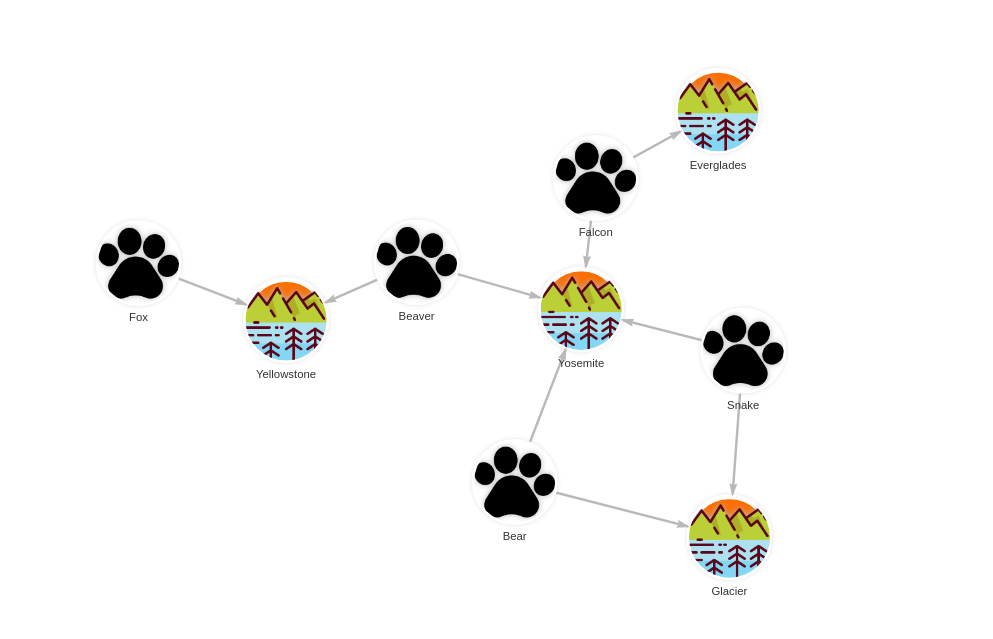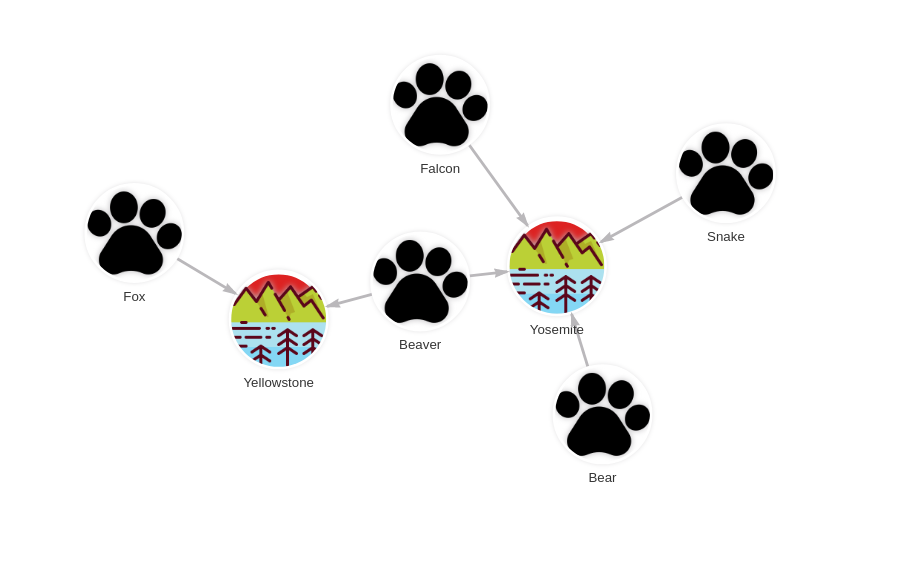set_cover
The Set Cover problem is one of the problems in graph theory that tries to solve the least possible set of sets that covers all elements inside those sets. Given a set of n elements, and a collection of m sets containing them, the algorithm tries to identify the smallest sub-collection of sets whose union equal to all the elements. It is NP-complete, however solvable with techniques such as constraint programming. The current algorithm uses GEKKO optimizer as a constraint programming solver.
| Trait | Value |
|---|---|
| Module type | module |
| Implementation | Python |
| Graph direction | undirected |
| Edge weights | unweighted |
| Parallelism | sequential |
If this algorithm implementation is too slow for your use case, contact us and request a rewrite to C++ !
Procedures
If you want to execute this algorithm on graph projections, subgraphs or portions of the graph, be sure to check out the guide on How to run a MAGE module on subgraphs.
cp_solve(element_vertexes, set_vertexes)
Input
The input itself represents an element-set pair with each row of the lists.
element_vertexes: List[Vertex]➡ List of element nodes in pairsset_vertexes: List[Vertex]➡ List of set nodes in pairs
Output
containing_set➡ minimal set of sets in which all the elements are contained
Usage
CALL set_cover.cp_solve([(:Point), (:Point)], [(:Set), (:Set)])
YIELD containing_set;
Example
- Step 1: Input graph
- Step 2: Cypher load commands
- Step 3: Running command
- Step 4: Results

CREATE (e:AnimalSpecies {name: 'Snake'});
CREATE (e:AnimalSpecies {name: 'Bear'});
CREATE (e:AnimalSpecies {name: 'Falcon'});
CREATE (e:AnimalSpecies {name: 'Beaver'});
CREATE (e:AnimalSpecies {name: 'Fox'});
CREATE (s:NationalPark {name: 'Yosemite'});
CREATE (s:NationalPark {name: 'Grand Canyon'});
CREATE (s:NationalPark {name: 'Yellowstone'});
CREATE (s:NationalPark {name: 'Glacier'});
CREATE (s:NationalPark {name: 'Everglades'});
MATCH (e: AnimalSpecies {name: 'Snake'}), (s:NationalPark {name: 'Yosemite'})
CREATE (e)-[:LIVES_IN]->(s);
MATCH (e: AnimalSpecies {name: 'Bear'}), (s:NationalPark {name: 'Yosemite'})
CREATE (e)-[:LIVES_IN]->(s);
MATCH (e: AnimalSpecies {name: 'Falcon'}), (s:NationalPark {name: 'Yosemite'})
CREATE (e)-[:LIVES_IN]->(s);
MATCH (e: AnimalSpecies {name: 'Beaver'}), (s:NationalPark {name: 'Yosemite'})
CREATE (e)-[:LIVES_IN]->(s);
MATCH (e: AnimalSpecies {name: 'Fox'}), (s:NationalPark {name: 'Yellowstone'})
CREATE (e)-[:LIVES_IN]->(s);
MATCH (e: AnimalSpecies {name: 'Beaver'}), (s:NationalPark {name: 'Yellowstone'})
CREATE (e)-[:LIVES_IN]->(s);
MATCH (e: AnimalSpecies {name: 'Snake'}), (s:NationalPark {name: 'Glacier'})
CREATE (e)-[:LIVES_IN]->(s);
MATCH (e: AnimalSpecies {name: 'Bear'}), (s:NationalPark {name: 'Glacier'})
CREATE (e)-[:LIVES_IN]->(s);
MATCH (e: AnimalSpecies {name: 'Falcon'}), (s:NationalPark {name: 'Everglades'})
CREATE (e)-[:LIVES_IN]->(s);
MATCH (e:AnimalSpecies)-[l:LIVES_IN]-(s:NationalPark)
WITH collect(e) AS animal_list, collect(s) AS park_list
CALL set_cover.cp_solve(animal_list, park_list)
YIELD containing_set
WITH containing_set AS national_park
MATCH (animal:AnimalSpecies)-[l:LIVES_IN]->(national_park)
RETURN animal, l, national_park;

greedy(context, element_vertexes, set_vertexes)
Not bad, not terrible.
Input
The input itself represents an element-set pair with each row of the lists.
element_vertexes: List[Vertex]➡ List of element nodes in pairsset_vertexes: List[Vertex]➡ List of set nodes in pairs
Output
containing_set➡ minimal set of sets in which all the elements are contained
Usage
CALL set_cover.greedy([(:Point), (:Point)], [(:Set), (:Set)])
YIELD containing_set;
